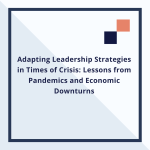Risk is an inherent part of any business, and managing it effectively is critical for an organization's success and sustainability. In today’s rapidly changing environment, understanding and addressing risks can mean the difference between thriving and failing. Risk management is the process by which businesses identify, assess, and mitigate potential threats to their operations, reputation, and financial health. Here are the key fundamentals of risk management that every organization should consider:
1. Risk Identification The first step in effective risk management is identifying potential risks that could impact the organization. Risks can come from a variety of sources, including financial uncertainty, legal liabilities, technology failures, natural disasters, and even human factors like employee turnover. It’s important to take a comprehensive approach to risk identification, involving different departments and stakeholders to get a full picture of the potential threats.
2. Risk Assessment Once risks are identified, the next step is assessing them. This involves evaluating the likelihood of each risk occurring and the potential impact it would have on the organization. Not all risks are equal—some might be highly unlikely but have catastrophic consequences, while others may be more likely but have a minor impact. Risk assessment helps prioritize which risks need immediate attention and which can be monitored.
3. Risk Mitigation After assessing the risks, organizations must develop strategies to mitigate them. Risk mitigation involves reducing the probability of the risk occurring or minimizing its impact if it does happen. Mitigation strategies can include a variety of approaches, such as improving internal controls, creating contingency plans, or transferring the risk through insurance. The goal is to ensure that the organization is prepared to handle risks and minimize any disruptions.
4. Risk Monitoring Risk management is not a one-time task—it requires ongoing monitoring. The business environment is constantly evolving, and new risks can emerge while existing risks may change in their likelihood or impact. Organizations need to continuously monitor their risk landscape, reassessing risks as circumstances change and adjusting their strategies accordingly.
5. Communication and Reporting Effective risk management requires clear communication across all levels of the organization. Leadership needs to be informed about potential risks and the measures in place to address them. Additionally, employees should be trained to recognize risks in their own roles and know how to report them. Regular reporting to management and stakeholders ensures that everyone is aware of the current risk environment and the organization’s preparedness.
6. Risk Culture An organization’s culture plays a crucial role in its risk management efforts. A strong risk culture encourages proactive identification and addressing of risks rather than a reactive or dismissive approach. Leadership must foster an environment where employees feel empowered to raise concerns and where taking calculated risks is seen as a necessary part of growth and innovation.
7. Risk Appetite Every organization has a different level of tolerance for risk, which is known as its risk appetite. Some companies may be more conservative and focus on minimizing risk, while others might embrace a higher degree of risk in pursuit of innovation and growth. Understanding the organization’s risk appetite is important because it guides the decision-making process, helping leaders balance potential rewards with potential risks.
8. Risk Transfer One of the key strategies for managing risk is transferring it to another party. This is commonly done through insurance, where the financial burden of certain risks is shifted to the insurer. Another form of risk transfer is outsourcing certain operations or entering into contracts where other parties assume responsibility for specific risks. While risk transfer doesn’t eliminate the risk, it can reduce its financial impact on the organization.
9. Legal and Regulatory Compliance Many risks are tied to legal and regulatory requirements. Organizations must ensure that they are in compliance with all applicable laws and regulations to avoid penalties, fines, or reputational damage. This can include everything from financial reporting requirements to data protection regulations. Failure to comply with legal standards can result in significant risks to the business, including lawsuits and regulatory action.
10. Crisis Management Even with the best risk management practices in place, some risks may still materialize, leading to a crisis. Crisis management is an essential aspect of risk management that involves having a plan in place for responding to emergencies. Whether it’s a natural disaster, cyberattack, or reputational crisis, having a well-defined crisis management plan helps ensure that the organization can respond quickly and effectively, minimizing the damage.
Conclusion Risk management is a fundamental part of business strategy, helping organizations navigate uncertainties while protecting their assets and reputation. By identifying, assessing, mitigating, and monitoring risks, businesses can reduce the likelihood of negative outcomes and position themselves for long-term success. In a world where risks are constantly evolving, a proactive and comprehensive approach to risk management is more important than ever.
This article is an excellent fit for Leader Quill, providing business leaders with a clear understanding of the essentials of risk management, a crucial area in effective business administration.





